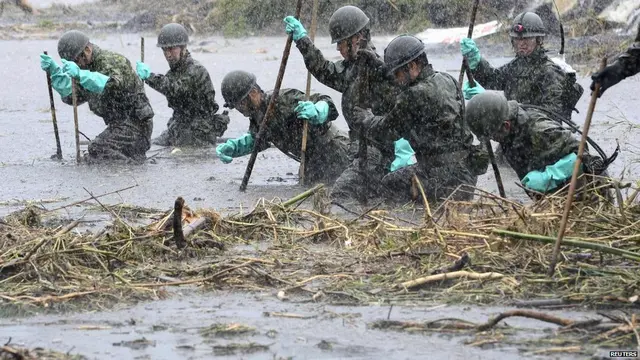Japan's Kumamoto Prefecture and surrounding areas has marked six months Friday since a powerful earthquake struck the region, leaving hundreds of thousands of people displaced.
However, poignant questions still left unanswered about the government's preparedness and response to the disaster.
On April 14, an earthquake with a magnitude of 6.5 struck Kumamoto in southwestern Japan followed by a magnitude-7.3 quake on April 16th and numerous other aftershocks in the weeks and months thereafter.
More than 200 evacuees are still staying in the nine emergency evacuation shelters, municipal officials said, though all the shelters will be closed in the coming weeks, as 94 percent or just over 40,000 temporary housing units have finished construction.
At the peak of the crisis, the region was forced to create 855 emergency shelters for those displaced, many of whom were prior occupants of the 172,072 homes destroyed or damaged by the quakes.
Public broadcaster NHK, quoting municipal authorities, said that 56 people had died in Kumamoto, with another 54 deaths being attributed to issues related to the earthquakes, including fatigue, stress and illness.
Many of the deaths in the days and weeks following the quakes were ascribed to what become known colloquially as economy class syndrome, a condition which can be triggered by spending long periods of time in a confined space where the body's movement and blood flow is restricted.
Between 40 and 50 deaths were linked to economy class syndrome in Kumamoto. Questions remain as to why news about the potentially deadly condition wasn't made available by the government to those at risks earlier, before it became an epidemic, and why more spaces were not made available at emergency shelters, following the outcry at the lack of facilities and squalid conditions at shelters opened after the Tohoku quake and tsunami disaster in 2011.
Quake-related costs following the temblors was put at 3.8 trillion yen (36.52 billion U.S. dollars), prefectural officials said, with 2 trillion yen of that owing to homes being destroyed or damaged.
The region's businesses, meanwhile, incurred quake-related damage costs to the tune of 820 billion yen, while infrastructure damage, including costs related to damaged roads and bridges came to 268.5 billion yen.
Damage to cultural property was estimated to amount to around 93.6 billion yen's worth of damage and that to the region's agricultural sector has been pegged at almost 150 billion yen.
In the village of Minamiaso, which suffered under heavy mudslides, roads have yet to be rebuilt and the area is still without a regular water supply. Local media also reported that in the town of Mashiki, where the intensity of the quake was the highest, a number of damaged houses have not be repaired.
The region was further rocked last weekend with the eruption of Mt. Aso, reminding residents that the area is extremely seismically active, with experts saying more than 510,000 tons of ash and volcanic rock were discharged in the large eruption last Saturday.
(APD)
 简体中文
简体中文

